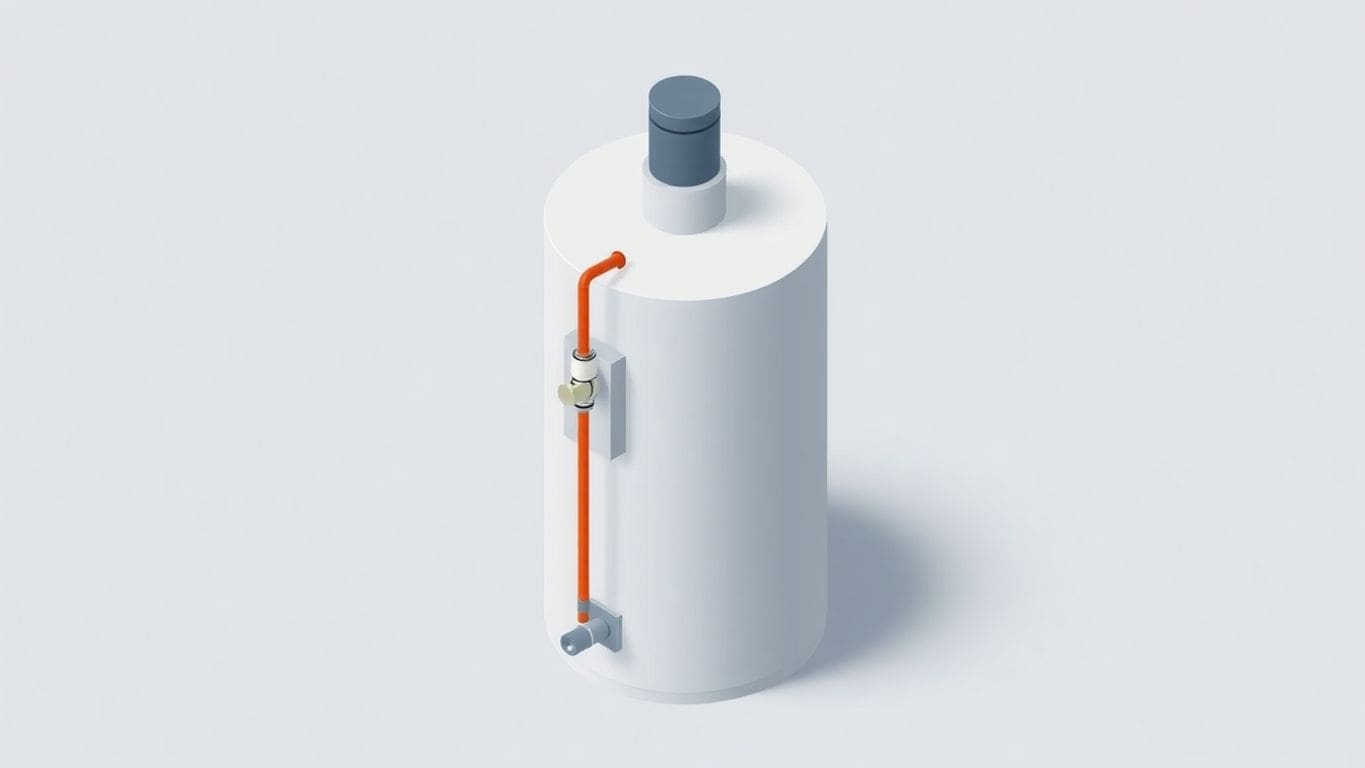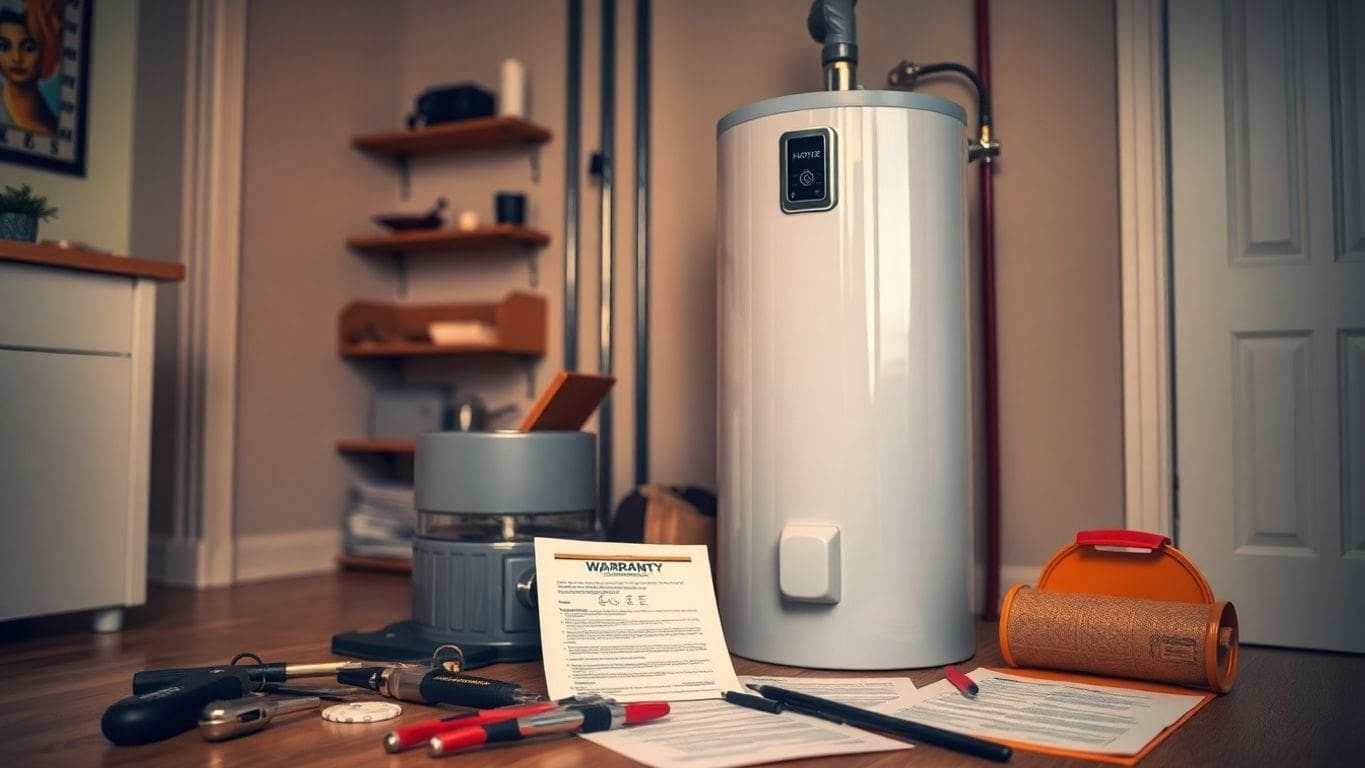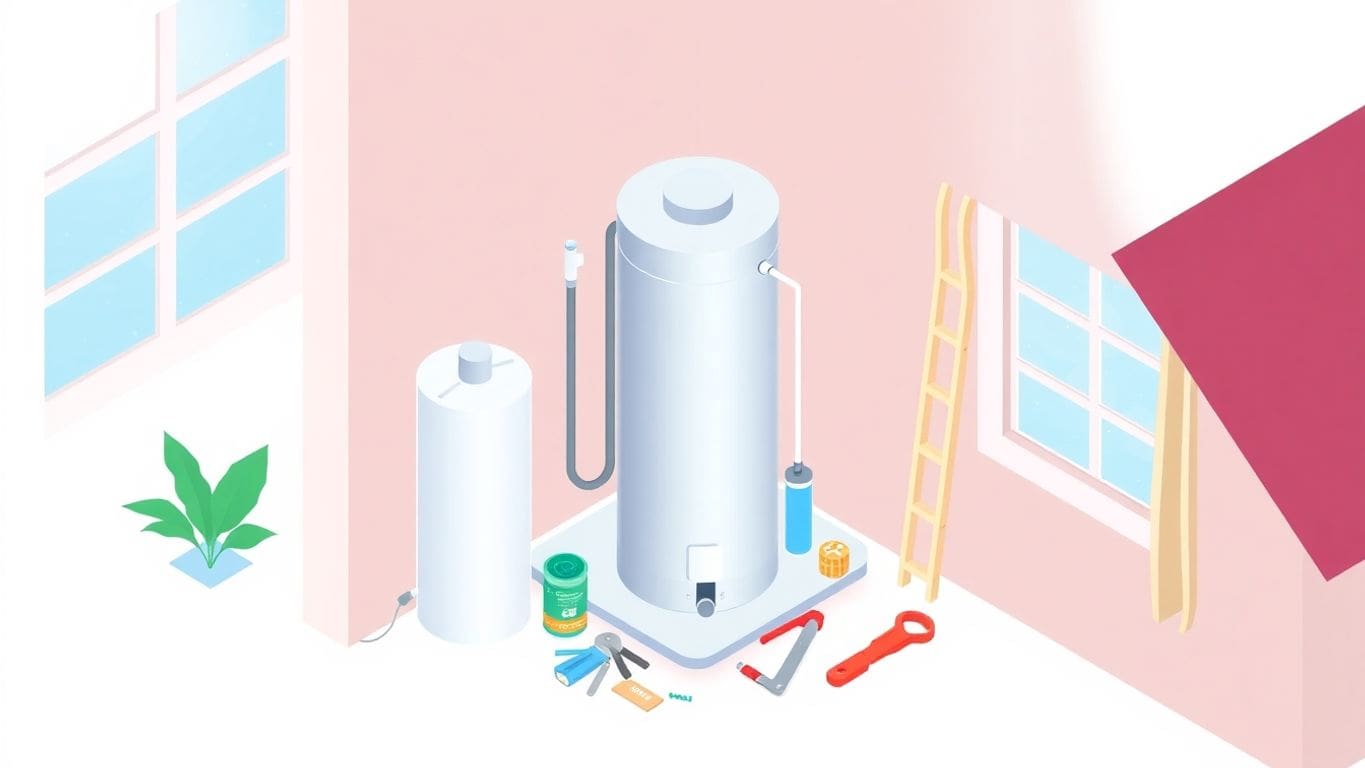
Ever noticed your water heater’s pressure relief valve dripping and wondered why? It’s a common issue that can be pretty concerning. This valve is crucial for safety, releasing water if the pressure or temperature gets too high. If it’s leaking, it might mean something’s off with your system. Let’s dive into what causes these leaks and how you can fix them.
A pressure relief valve is a safety gadget on your water heater. Its main job is to let out water if the pressure inside the tank gets too high. This helps stop the water heater from exploding or getting damaged. You’ll usually find this valve on the side or top of the tank, connected to a pipe that safely directs the water to the floor or a drain.
The pressure relief valve is super important for keeping your home safe. It gives steam and water a way to escape when the tank’s pressure or temperature goes over safe levels. Without it, the tank could burst, which is dangerous and can cause a lot of damage. So, having a working valve is a must.
The valve opens when the tank’s pressure goes above a certain level, usually around 150 psi. It can also let out water if the temperature inside gets too high, typically over 210 degrees Fahrenheit. This means the valve helps control both pressure and temperature, making sure your water heater runs safely.
When water heats up, it expands, and this can cause the pressure inside your water heater to rise. If the pressure gets too high, the relief valve will start to leak. Ideally, the pressure in your water heater should be between 40 and 80 psi. If it climbs above 150 psi, it’s time to take action. You can check this with a pressure gauge attached to your heater’s outlet valve. Installing an expansion tank can help manage this pressure by giving the extra water somewhere to go.
Temperature changes can also cause your pressure relief valve to leak. If your water heater’s thermostat is set too high or isn’t working right, the water could get too hot. This might cause the valve to open. The safe range for water heater temperatures is around 120-125 degrees Fahrenheit. If your water is hotter than this, consider adjusting the thermostat to avoid leaks.
Over time, sediment can gather at the bottom of your water heater tank. This sediment can mess with the valve and cause leaks. Regular maintenance, like flushing the tank, can help keep sediment from building up. If you notice your valve leaking and suspect sediment is the cause, it might be time for a good clean-out.
Keeping an eye on your water heater’s pressure and temperature can prevent many issues. If you’re not comfortable doing this yourself, a professional can help ensure everything is running smoothly.
To figure out if your water heater has high pressure, you’ll need a pressure gauge. This device helps you check the pressure inside the tank. You can attach it to a hose faucet outside or to the pipes connected to your heater. Make sure all water outlets are off before you start. The gauge should read between 40 and 80 psi. If it goes above 150 psi, that’s a problem. High pressure can cause leaks and other issues.
Sometimes, you might notice signs of high pressure without using a gauge. Here are a few things to watch for:
If you find out that your water heater has high pressure, don’t worry. Here’s what you can do:
Keeping an eye on your water heater’s pressure is important. It helps prevent leaks and keeps your system running smoothly. If you notice anything unusual, don’t wait to check it out.
Your water heater’s thermostat controls how hot the water gets. If it’s set too high, the water can get too hot, causing the pressure relief valve to leak. It’s important to keep the thermostat at a safe level, usually around 120 degrees Fahrenheit. To check the setting, locate the thermostat on your water heater and adjust it if necessary.
When water gets too hot, it expands. This expansion increases pressure inside the tank. If the pressure gets too high, the relief valve opens to let some water out, preventing a possible explosion. Overheating can also damage the tank, leading to costly repairs.
To avoid leaks, you can adjust the water heater temperature. Here’s how:
Keeping your water heater at the right temperature not only prevents leaks but also saves energy and money. Regular checks can help you catch problems early.
Let’s talk about sediment. It’s like the dirt that settles at the bottom of a pond. In your water heater, this dirt is actually minerals from your water. These minerals, mostly calcium and magnesium, can form a hard layer inside your tank. Over time, this layer gets thicker and can cause problems.
This sediment isn’t just sitting there. It can mess with your water heater’s parts, especially the pressure relief valve. When there’s too much sediment, the valve might not close properly. This can lead to leaks. Imagine trying to close a door with a rock in the way—it’s not going to seal tight.
Stopping sediment buildup is easier than you think. Here are some tips:
Regular maintenance is key to keeping your water heater in good shape. By taking these steps, you can help prevent leaks and other issues caused by sediment buildup. If your heater is over 10 years old, it might be time to think about a new water heater to save on energy and avoid bigger problems later.
Your pressure relief valve might need replacing if it’s leaking or not working right. A constant drip or trickle of water from the valve is a big sign. This might mean it’s not sealing properly. Also, if the valve doesn’t release water when the pressure is too high, it might be stuck. Rust or corrosion around the valve is another clue it’s time for a change.
When picking a new valve, make sure it matches your water heater’s specs. Look at the pressure and temperature ratings on your heater. The valve should handle these ratings. It’s smart to bring the old valve to the store to find a matching one. Some valves are universal, but it’s safer to get one that fits your model exactly.
Replacing a valve can be a DIY job if you’re handy. You’ll need some basic tools and the right replacement valve. But if you’re not sure, it’s best to call a pro. They can make sure everything’s done safely and correctly. Plus, a plumber can check for other issues with your water heater. If your heater is older, like 10-15 years, it might be time to think about replacing the whole unit.
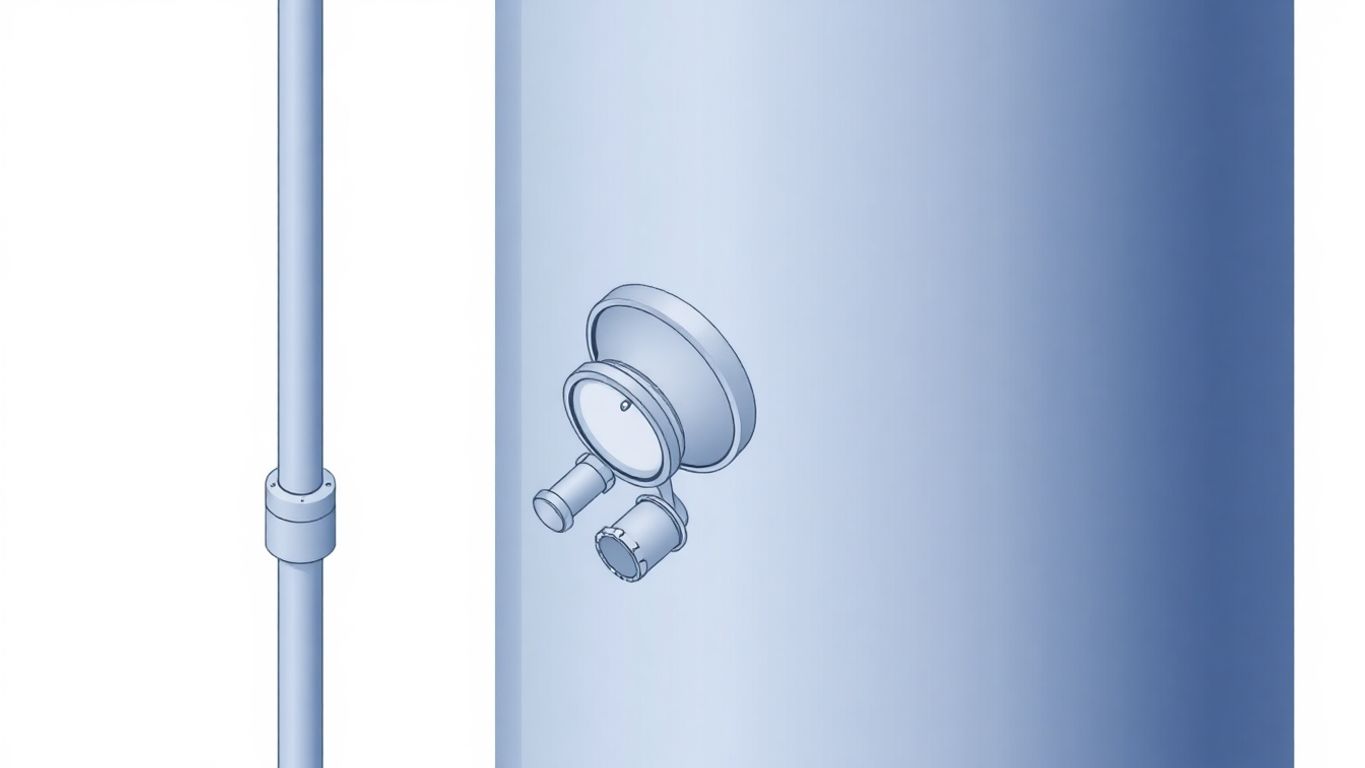
Keeping your water heater in good shape is super important. It’s not just about having hot showers; it’s about avoiding big problems down the line. Here are some simple steps you can take to ensure your water heater stays in top condition.
Regular maintenance is like giving your water heater a health check-up. It helps catch small problems before they become big headaches. Here’s what you can do:
If your water heater doesn’t have an expansion tank, think about adding one. An expansion tank is like a cushion for your system. It absorbs extra pressure, which can stop leaks from happening.
Keeping an eye on the water pressure in your home is key. Too much pressure can cause leaks. Here’s how you can keep it in check:
By taking these preventive steps, you’re not only saving yourself from potential trouble but also making sure your water heater lasts longer. It’s all about keeping things running smoothly and avoiding unexpected surprises.
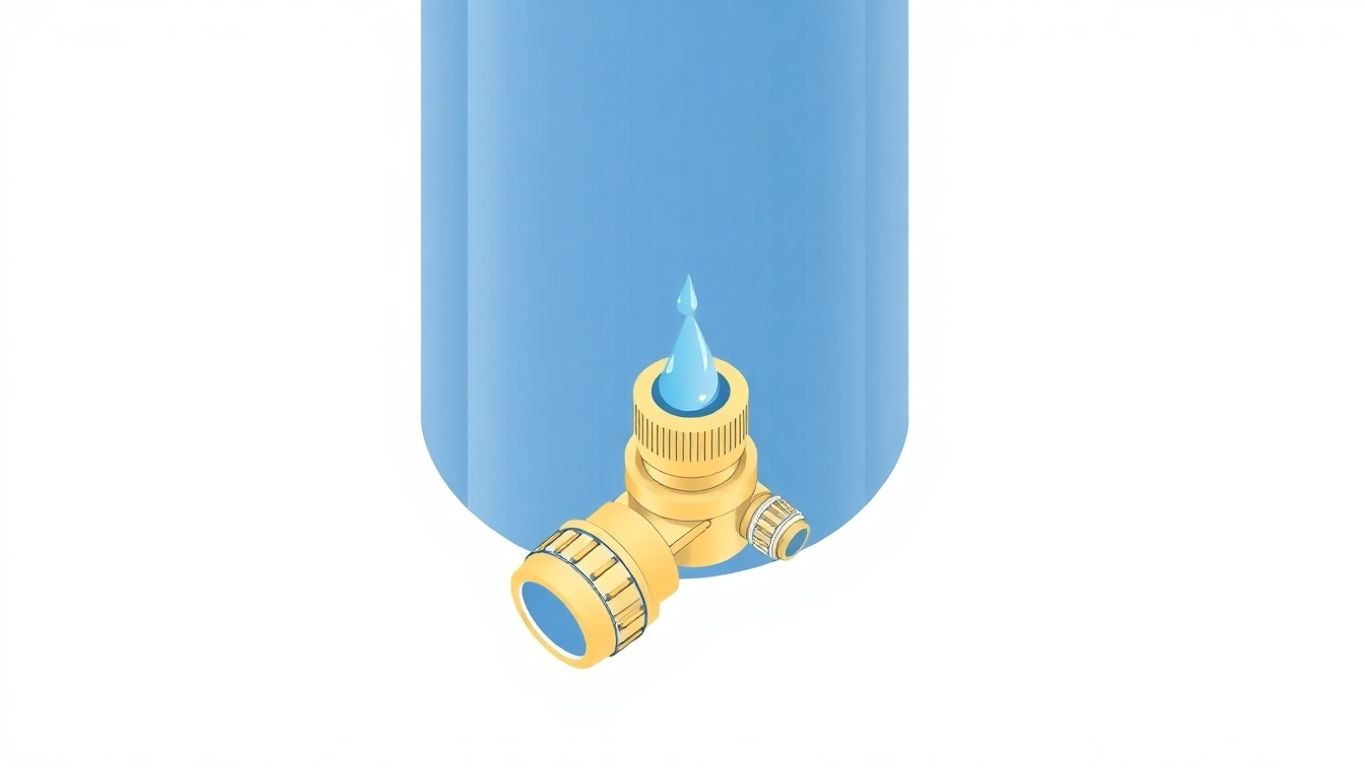
First things first, take a good look at your pressure relief valve. Check for any cracks or signs of wear and tear. Sometimes, debris can get stuck in there, causing it to malfunction. Make sure the area around the valve is clean and free from any blockage. If you notice any damage, it might be time to think about getting a new one.
If the valve looks okay but still leaks, cleaning might do the trick. Turn off the water heater and let it cool down. Carefully remove the valve and clean it with a soft brush and some water. Make sure there’s no dirt left inside. After cleaning, reattach the valve and see if the leak has stopped.
Sometimes, even after checking and cleaning, the valve might still leak. In such cases, it’s best to call a professional plumber. They have the tools and know-how to handle tricky situations. Don’t risk making things worse by trying to fix something you’re unsure about. A pro can help ensure your water heater stays safe and sound.
Remember, a leaking pressure relief valve isn’t just a minor issue. Left unchecked, it can lead to bigger problems down the road. Always keep an eye on it and act promptly when something seems off.
Sometimes, fixing a leaking pressure relief valve on your own can be tricky. If you’ve tried everything and the leak persists, it might be time to call a pro. Professionals have the right tools and know-how to figure out what’s wrong and fix it fast. Don’t wait too long, or you might end up with bigger problems.
Getting a professional to look at your water heater can save you a lot of hassle. They can spot issues you might miss. Plus, they can make sure everything is working safely. Here are some benefits:
Not all plumbers are the same. You want someone who knows water heaters well. Here’s how to find a good one:
"Having a skilled plumber check your water heater can give you peace of mind. It’s like having a safety net for your home’s hot water system."
Ignoring a leaking pressure relief valve on your water heater can lead to serious problems. This tiny leak might seem harmless, but it can cause big issues. If the valve can’t release pressure properly, the water heater could overheat. In extreme cases, this might even lead to an explosion. That’s a scary thought, right? Besides, the leaking water can damage your floors and walls, leading to costly repairs.
When you ignore a leaking valve, you’re not just risking immediate problems. Over time, the leak can cause rust and corrosion inside the heater. This can shorten the lifespan of your water heater. You might find yourself facing frequent repairs or even needing a new heater sooner than expected. And let’s be honest, nobody wants to deal with the hassle and expense of replacing a water heater too soon.
To keep your home safe, it’s important to take action when you notice a leak. First, check the pressure and temperature settings on your heater. Make sure they’re within the recommended range. If you’re not sure how to do this, don’t hesitate to call a professional. They can help ensure everything is working correctly.
Remember, a little maintenance now can save you from big headaches later.
When it comes to water heaters, it’s always better to be safe than sorry. If your water heater is over 20 years old, keep an eye out for problems like leaks and rising energy bills. Upgrading to a newer model can save you money and trouble in the long run. Consider eco-friendly options like tankless or solar-powered systems for added benefits.
A powered anode rod is like a superhero for your water heater. It fights off rust and stops limescale from building up. This rod helps keep your water heater clean and working well. By using electricity, it protects the metal inside from rusting. This makes your water heater last longer and reduces leaks.
New technologies are making water heaters smarter and safer. Some water heaters now have sensors that keep track of pressure and temperature. If something goes wrong, these sensors can alert you. This way, you can fix issues before they become big problems. Smart water heaters can even connect to your phone, so you can monitor them from anywhere.
In the future, water heaters might become even more advanced. Imagine a water heater that fixes itself when it starts to leak! While we’re not there yet, researchers are working on materials that heal themselves. These materials could stop leaks as soon as they start. Until then, regular checks and maintenance are your best bet to keep leaks away.
Keeping your water heater in good shape is important. With the right tools and a bit of care, you can prevent leaks and enjoy hot water whenever you need it.
A water heater pressure relief valve is a safety device that releases water if the pressure or temperature inside the tank gets too high. This helps prevent the tank from bursting or exploding.
The valve might leak due to high water pressure, temperature fluctuations, sediment buildup, or a faulty valve. It’s important to check these issues to prevent further problems.
You can use a pressure gauge to measure the pressure. If it reads above 80 psi, the pressure is too high, and you might need a pressure-reducing valve or an expansion tank.
First, check the water pressure and temperature settings. If they’re too high, adjust them. Inspect the valve for damage or debris, and consider replacing it if necessary.
Yes, replacing a pressure relief valve can be a DIY task if you’re comfortable doing it. However, if you’re unsure, it’s best to call a professional plumber to ensure it’s done correctly.
Sediment buildup occurs when minerals like calcium and magnesium settle at the bottom of the tank. This can interfere with the valve’s function and cause leaks.
Regular maintenance, such as checking the pressure relief valve and flushing the tank, should be done annually. This helps prevent leaks and extends the life of your water heater.
If you’re unable to fix a leak or if the problem persists after troubleshooting, it’s time to call a professional plumber. They can accurately diagnose and resolve the issue.

